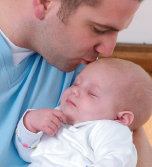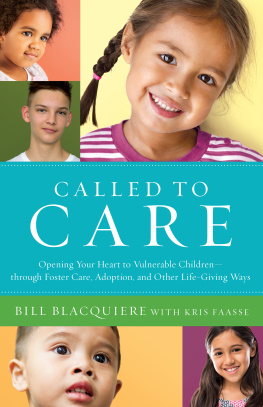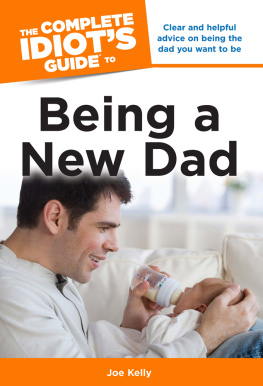A DADS GUIDE TO
babycare

COLIN COOPER

First published in 2008 in the United Kingdom by
Carroll & Brown Publishers Limited
20 Lonsdale Road
London NW6 6RD
Managing Art Editor Emily Cook
Photography Jules Selmes
Text Colin Cooper 2008
Illustrations and compilation
Carroll & Brown Limited 2008
A CIP catalogue record for this book is available from
the British Library.
ISBN 978-1-907952-38-8
The moral right of Colin Cooper to be identified as the author of this work has been asserted in accordance with the Copyright, Designs and Patents Act of 1988.
All rights reserved. No part of this publication may be reproduced in any material form (including photocopying or storing it in any medium by electronic means and whether or not transiently or incidentally to some other use of this publication) without the written permission of the copyright owner, except in accordance with the provisions of the Copyright, Designs and Patents Act of 1988 or under the terms of a licence issued by the Copyright Licensing Agency, 90 Tottenham Court Road, London WIP 9HE. Applications for the copyright owners written permission to reproduce any part of this publication should be addressed to the publisher.
Contents
Introduction
New mums think that new dads are useless. Do they have a point? Well, as were talking in generalisations here, the answer to that question is also going to be yes, but its not an insoluble problem.
We have to accept that women are naturally going to be the main care providers. They are biologically tuned-in to that role and the female body offers everything that a newborn baby needs in order to survive. But this puts a lot of pressure on mums and can cause problems for both parents. A mum needs help but will feel that she is the only person able to do the job properly; a dad may feel excluded and can become useless.
A new dad must signal his intention to be fully involved with the care of his child as early as possible, and then start living up to that promise as soon as his baby is born. Both partners need to be clear that the responsibilities for the baby and household are going to be shared equally, wherever possible.
A new mum will always believe that she can do things quicker for the baby than anyone else (shes probably right), and will often refuse help even when she is desperate and you are offering. Its stressful, shell say, and theres no time to show you what to do. But this means that not only are you pushed to the sidelines but you dont have the chance to learn so that you can take over next time. So you not only need to be assertive to carve out a role for yourself, you also need to know what you are doing and be confident about it so that you clearly have something to offer.
Most fathers learn babycare through trial and error, trial and error, trial and error. What this book aims to do is give you a shortcut to the wisdom of experienced dads who have learned the hard way.
Some of the advice will work for you immediately, other ideas will work one day but not the next. Some advice you will simply scoff at and turn the page it may seem crazy or just not relevant to your everyday life. Thats fine because there are no rules for bringing up babies; every child is different. But sometimes the most unlikely ideas will work when you least expect it, so its good to try different approaches just in case they surprise you.
There are chapters on all the basic techniques plus some big ideas to get your head around, such as how to handle the responsibility of being a role model. You will quickly learn what has to be done and how to do it. All you need then is practice. And you can tailor your approach in discussion with your partner to meet her needs and of your child.
In short, this book should give you everything you need to make yourself useful. Good luck!
Thats my baby

How your baby might look
Boy? Girl? Alien? All babies look a little like ET, with or without a healthy head of hair. It may help to think what you would look like had you spent nine months confined in a hot bath, before being forced out through the plughole raw, shrivelled, swollen and bruised are the first words that spring to mind. Of course, your baby may be beautiful from the start. But if you think not, other adoring family members will soon convince you that your baby is exceptionally handsome!
GET YOUR PRIORITIES RIGHT
The first few hours after the birth are all about relief and recovery. Your baby has to be gently settled into his new world, your partner badly needs a rest and you will be feeling somewhat shell-shocked. There will be practical things for you to organise but stick to the immediate needs of your new family, rather than rushing around trying to find something to do. What your partner will appreciate most is you giving full attention to her and the baby; seeing and hearing how much you love them. At a really basic level, your acceptance of the baby is vital to start the family relationship off on the right foot. Your partner needs to feel that she and the baby have your unconditional support for the years ahead, so start as you mean to go on, and spend time telling her how you feel and listening to how she feels.
Head Your babys skull may be squashed into a slightly pointed shape. This can happen during a normal vaginal delivery and even in some Caesarean births. In both cases, your baby has spent time upside down in the birth canal. Dont worry; this gradually evens out. Babies born with the use of forceps or ventouse suction may have bruising.
Fontanelles There will be two soft, pulsating patches on your babys skull that allow it the flexibility to be squeezed through the birth canal. The fontanelles do not knit together fully for about two years but they are covered by a tough membrane.
Hair Your baby may have a full head of hair or none at all. Whatever hair he does have will soon be replaced by new growth, which may be of a different colour and texture.
Ears Some edges of the ears may be folded over at birth but they will gradually return to their natural shape.
Eyes These may be bloodshot or puffy and only one may be opened at a time. Most Caucasian babies start with dark blue eyes, while most African and Asian babies have dark grey or brown eyes at birth. Their true colour will not appear for about six months.
Nose This may be flattened.
Mouth Very rarely, a baby will have an early tooth that will need to be removed.
Skin The appearance of your babys skin will differ depending on whether he arrived early, on time or late. Two things you may notice are lanugo fine downy hair, and vernix a white protective grease that covers the skin. The longer your baby spends in the womb, the less likely he is to have these at birth.
Chest Nipples may be swollen and giving off a discharge due to the action of hormones. Any swelling or discharge will disappear in a few days.
Umbilical cord The stump of the umbilical cord will be clamped to prevent bleeding. It will soon dry out, turn black and eventually fall off.
Genitals These are often swollen at first, following a large dose of hormones from the mother before birth.
Fingers The fingers and nails are perfectly formed at birth. The nails can be sharp and are sometimes blue. Any blueness should resolve in a few days.














